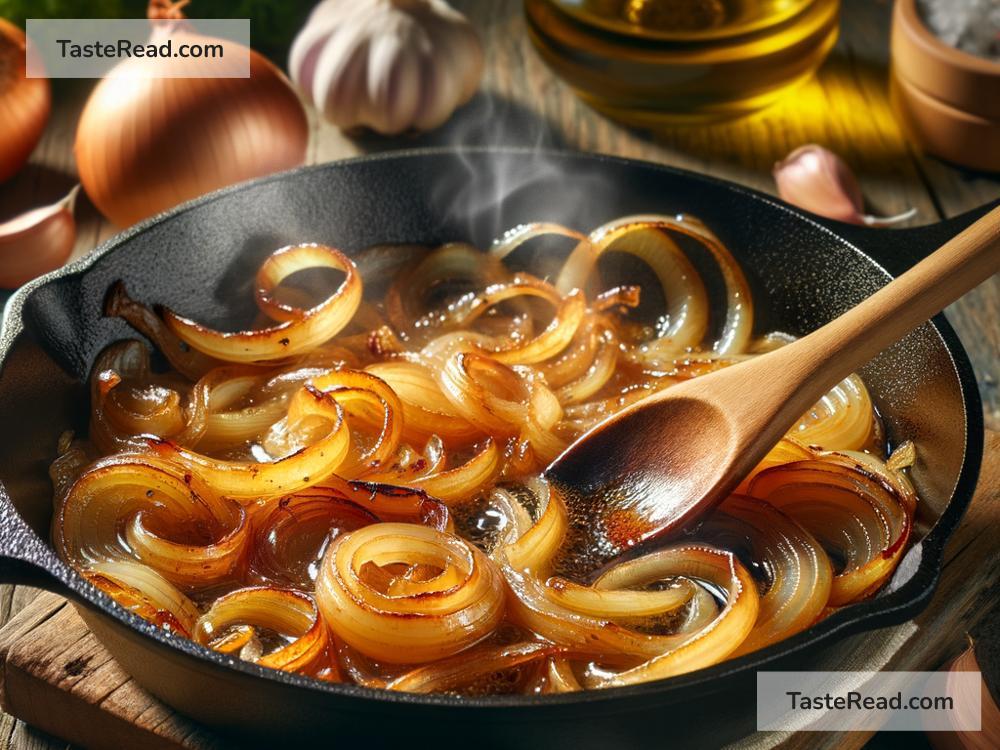How Caramelization Transforms the Flavor of Onions
Onions are a kitchen staple that can transform any dish. From soups to stews, stir-fries to sandwiches, their bold yet versatile flavor comes in handy when you’re creating meals at home. But have you ever stopped to wonder why onions taste so different when they’re cooked slowly and turn golden brown? This magic is thanks to a process called caramelization, and it’s what takes onions from sharp to sweet in both flavor and aroma.
Let’s explore what caramelization is, how it happens, and why it works so well with onions!
What Is Caramelization?
Caramelization is a natural cooking process where sugars break down under heat. When you cook onions slowly over low to medium heat, their natural sugars transform into a golden, sticky goodness. This not only changes how the onions look but creates a complex flavor that’s sweet, savory, and rich.
Caramelization isn’t exclusive to onions. It’s the same process that happens in foods like roasted vegetables, certain sauces, and even desserts. However, onions contain a perfect balance of sugars and natural compounds, making them especially delicious when caramelized.
Why Do Onions Change Flavor?
Raw onions taste sharp and pungent because they contain sulfur-based compounds. These compounds can be harsh on the tongue (and sometimes bring tears to your eyes when you cut them!). When onions are cooked, however, their sulfur compounds mellow out, and their natural sugars become the star of the show.
As the onion heats up, its complex structure changes. The heat causes the onion’s cell walls to break down, releasing water and sugars into the pan. As the water evaporates and the sugars cook, a whole new level of flavor emerges. Instead of being sharp and biting, caramelized onions taste sweet, deeply savory, and downright irresistible. This transformation gives dishes a comforting, almost “umami” flavor—the kind that makes you want to go back for seconds.
The Science Behind Caramelization
Caramelization is, in essence, a chemical reaction. The sugars in the onion (namely glucose, fructose, and sucrose) react to heat and start to break down. This reaction is technically called the “Maillard reaction,” but don’t let the name scare you—it’s simply what makes foods brown and flavorful when cooked.
The Maillard reaction is different from simple burning or charring, though. Caramelization occurs slowly and at the right temperature, usually between 320°F to 356°F (160°C to 180°C). If the heat is too high, onions will burn before their sugars have had time to develop into the sweet, golden flavors we love.
How To Caramelize Onions Perfectly
The caramelization process requires time and patience, but it’s worth it. Here’s a simple step-by-step guide to caramelizing onions:
-
Choose Your Onions
Any type of onion works for caramelization, but yellow or sweet onions, such as Vidalia, tend to caramelize the best since they contain higher amounts of natural sugar. -
Slice Them Thinly
Cut your onions into thin, even slices. This helps them cook evenly and release their moisture for consistent caramelization. -
Heat Your Pan
Use a wide skillet (preferably stainless steel or cast iron) and heat it over medium-low heat. Add a knob of butter or a drizzle of oil. Butter brings richness while oil prevents sticking. -
Add the Onions
Place the sliced onions in your pan and spread them out so they’re evenly distributed. Sprinkle a pinch of salt to help extract moisture. -
Cook Slowly
The key to perfect caramelized onions is patience. Stir every few minutes to prevent burning, but be careful not to over-stir. Keep the heat low and let the flavors develop. -
Adjust As Needed
If the onions start to stick, add a splash of water or broth to deglaze the pan. This loosens any flavorful bits stuck to the bottom and enhances the caramelized flavor. -
Watch for Color
After 20-40 minutes of slow cooking, your onions should turn golden brown and soft. Resist the urge to rush—it’s this gradual transformation that brings out their sweetness.
Where Can You Use Caramelized Onions?
Caramelized onions are the ultimate flavor booster. Here are a few ideas for incorporating them into your cooking:
- Pasta: Stir them into a creamy sauce or toss them into your favorite spaghetti recipe.
- Sandwiches & Burgers: Add them as a sweet topping to elevate your lunch.
- Soups: Blend them into French onion soup for a rich and comforting meal.
- Pizza: Scatter caramelized onions on top of a cheese pizza or flatbread.
You can also store extra caramelized onions in the fridge—just pop them into an airtight container. They’ll stay fresh for up to a week and make meal prep even easier.
Why We Love Caramelized Onions
Caramelized onions are proof that cooking is both a science and an art. With nothing more than heat, time, and a little patience, you can transform a humble onion into something extraordinary. Their sweet, savory flavors complement a wide range of foods, adding complexity to even the simplest dishes.
So the next time you’re cooking onions, challenge yourself to go beyond the usual sauté. Take the time to caramelize them. Your taste buds—and anyone lucky enough to share your kitchen creations—will thank you!


